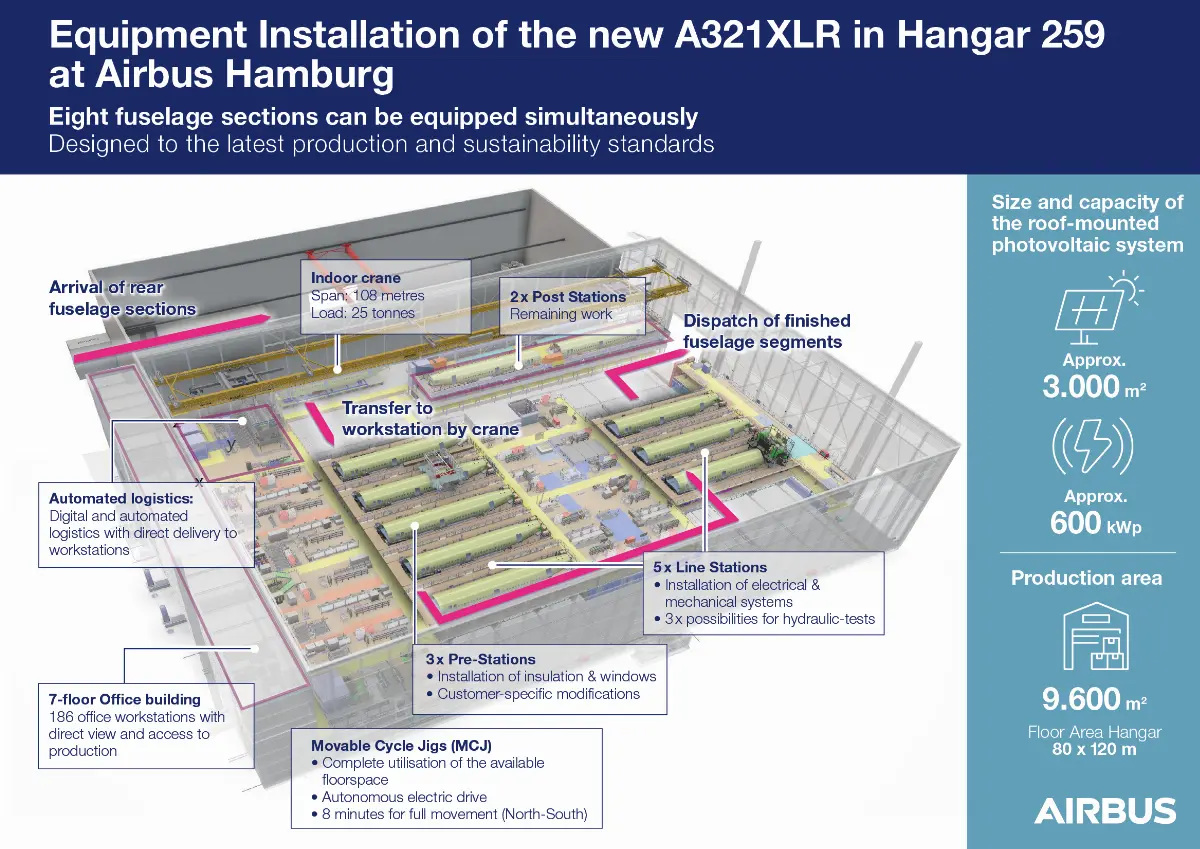
Airbus: new hangar inaugurated in Hamburg
Dedicated to the A-321XLR aircraft equipment installation

Airbus is advancing its industrial system and expanding ramp-up capacity with a new automated A-321XLR equipping hangar, officially opened yesterday by Hamburg’s First Mayor Peter Tschentscher and German Aerospace Coordinator Anna Christmann. With this, the company continues its modernisation and digitalisation of its industrial system and expands its capacity for the rate ramp-up in the A-320 programme to 75 in 2026.
In the new equipment installation hangar, with 9,600 sm of production space, designated H259, all the components of the rear fuselages of the A-321XLR aircraft –also built in Hamburg– will be installed and mounted. The hangar is equipped with a full range of state-of-the-art technologies for operations and manufacturing, such as automated logistics, fully digital systems, and test stations that can output the status of each fuselage section (both in terms of logistics and resources) at any time. The almost 24-metre-long fuselage sections are equipped with all electrical and mechanical systems, as well as other elements such as windows, floor panels or external antennas, on an automated ‘pulse line’ consisting of eight stations. Each fuselage section is extensively tested directly after the installation of the systems. The fuselage sections are then transferred to the final assembly line in Hamburg.
The stations in the new hangar were planned in close consultation with the employees to create both an efficient production flow and an ergonomically optimised and modern working environment. In addition, the interior design also focused on ensuring optimal conditions for cooperation between the employees in production and the supporting functions.
The structure was planned and built sustainably. A 3,000 sm photovoltaic system on the roof supplies the hangar with electricity, and surpluses are used to power the site. The office block on the south side offers an excellent level of insulation thanks to extensive insulation of the ceiling and walls. A fully automatic control system for heating, ventilation and lighting complements the measures.
This model is the next evolutionary step of the A-320neo, in response to market demands for even more range and payload, creating more added value for the airlines. It will deliver a (‘Xtra-long’) range of up to 4,700 nm – 15% more range than the A-321LR – and with 30% lower fuel burn per seat compared with previous-generation competitor aircraft, as well as reduced NOx emissions and noise. For passengers, the A-321XLR’s new Airspace cabin will provide the best travel experience, while offering seats in all classes with the same high-comfort as on a long-haul wide-body, with the low costs of a single-aisle aircraft. The A-321XLR currently has nearly 570 orders from 27 customers worldwide. Entry-into-service is planned for the second quarter of 2024.
AVIONEWS - World Aeronautical Press Agency